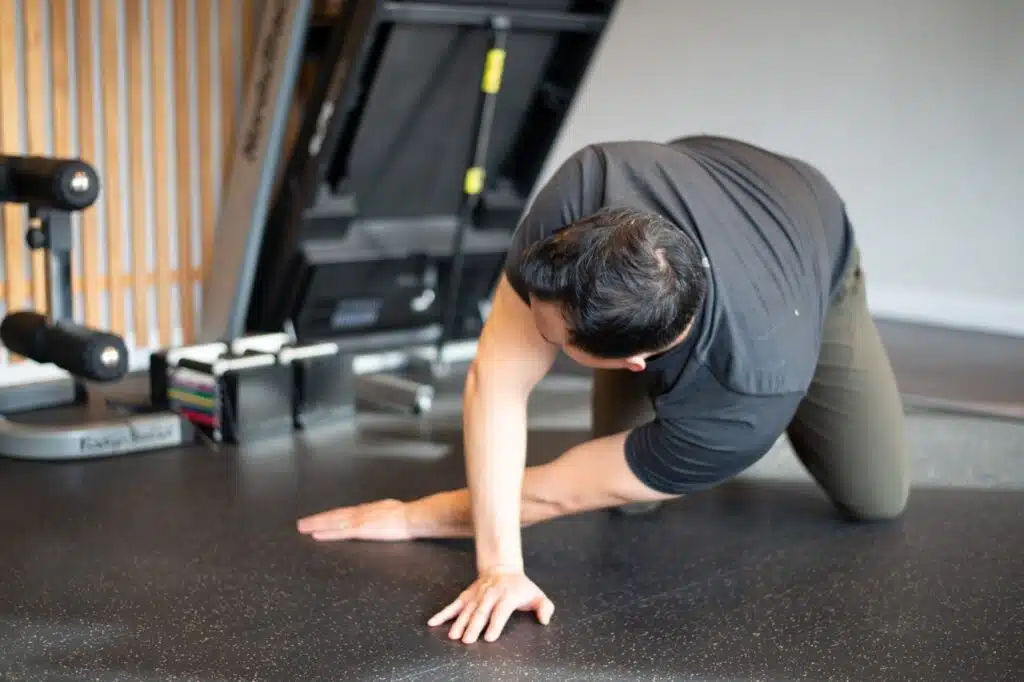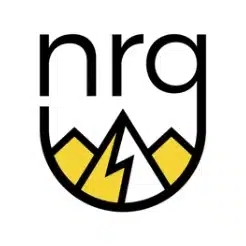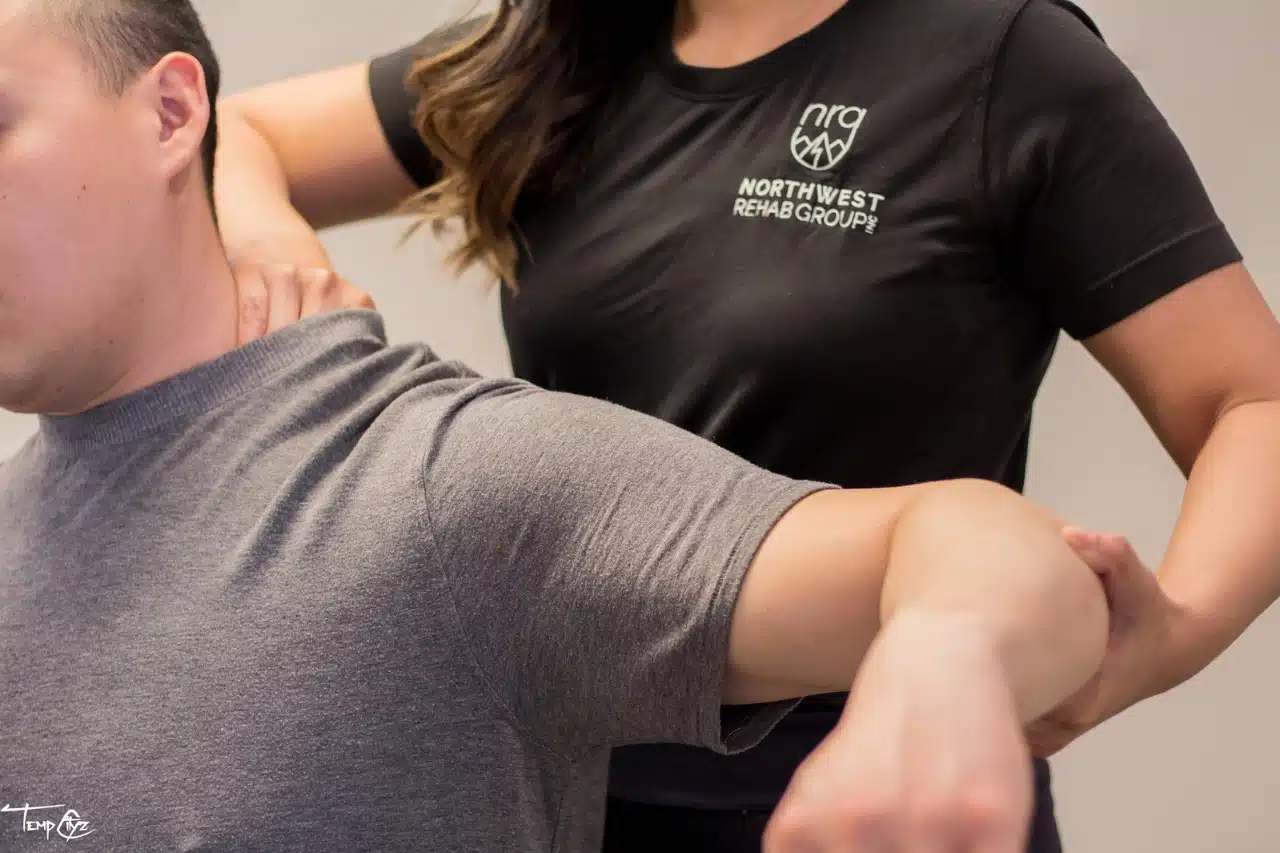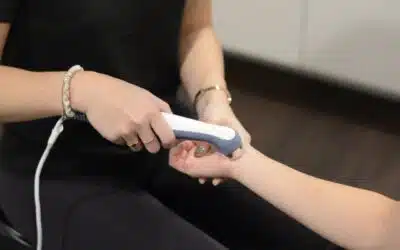The shoulder is one of the most complex and versatile joints in the human body, allowing for a wide range of motion that is unparalleled in other joints. Central to this functionality is the rotator cuff, a crucial ensemble of muscles and tendons that envelop the shoulder joint, providing stability and facilitating movement. The rotator cuff consists of four muscles: the supraspinatus, infraspinatus, teres minor, and subscapularis. Each plays a pivotal role in shoulder mechanics, working in unison to allow for lifting, pushing, pulling, and the fine-tuned movements our arms are capable of.
However, the very versatility that makes the shoulder so unique also puts it at risk. Rotator cuff injuries can occur from acute incidents—such as falls or direct blows—or from chronic wear and tear over time. Athletes, particularly those in sports requiring repetitive arm movements like baseball, tennis, and swimming, are at higher risk. But it’s not just athletes; age-related degeneration affects nearly everyone to some degree, making older adults particularly susceptible. Additionally, individuals in occupations demanding repetitive lifting or overhead activities—like painters, carpenters, and electricians—also face a higher risk of developing rotator cuff injuries.
Common causes of rotator cuff injuries include:
- Repetitive stress: Continuous use of the shoulder in sports or jobs can strain the rotator cuff muscles and tendons.
- Acute injury: Sudden, forceful movements or falls can tear rotator cuff tendons.
- Lack of blood supply: As we age, the blood supply to our rotator cuff tendons decreases, hindering the body’s natural repair mechanisms and making the tendons more prone to damage.
- Bone spurs: Over time, bone growths can develop on the underside of the acromion (the bone on the top of the shoulder), irritating or damaging the rotator cuff tendon as it rubs against the spur.
Understanding the rotator cuff’s critical role and the factors contributing to injuries is the first step in prevention and effective management. Recognizing the symptoms early and seeking appropriate care can prevent further damage and ensure the longevity of shoulder health and mobility. With advancements in medical knowledge and treatments, many individuals with rotator cuff injuries can return to their normal activities with proper intervention and rehabilitation.
Identifying Rotator Cuff Injuries
Understanding the symptoms indicative of a rotator cuff injury and the diagnostic processes involved is essential for timely and effective treatment. Identifying these injuries early can significantly improve the outcome, helping to avoid further damage and ensure a smoother recovery.
Symptoms Indicative of a Rotator Cuff Injury:
- Pain and Tenderness: One of the most common symptoms is a dull ache deep in the shoulder, which may become more pronounced when reaching overhead, lifting objects, or even during rest, especially at night.
- Weakness: Difficulty and weakness when lifting the arm or a noticeable decrease in the ability to move the arm, especially lifting it sideways or rotating it.
- Limited Range of Motion: Experiencing restricted movement when attempting to rotate or lift the arm, often accompanied by pain.
- Audible Noises: Crepitus or a crackling sensation when moving the shoulder in certain positions.
- Swelling and Stiffness: The shoulder may appear swollen and feel stiff, limiting normal movement.
Diagnostic Approaches
Diagnosing a rotator cuff injury involves a combination of clinical evaluation and imaging tests, each playing a crucial role in determining the extent and nature of the injury.
Clinical Evaluation: The process begins with a detailed medical history and a physical examination. The healthcare provider will ask about the onset of symptoms, activities leading to discomfort, and any previous shoulder injuries. During the physical exam, the doctor will assess pain, tenderness, strength, and range of motion in the shoulder.
Imaging Tests:
- X-rays: While X-rays cannot show soft tissues like the rotator cuff tendons, they can reveal bone spurs or other skeletal abnormalities that may contribute to symptoms.
- Ultrasound: This imaging technique visualizes soft tissue structures and can show tears in the rotator cuff tendons. It’s beneficial for dynamic assessment, observing the tendon as the shoulder moves.
- Magnetic Resonance Imaging (MRI): MRI provides the most detailed view of soft tissues, including the rotator cuff tendons, and can identify both partial and complete tears, as well as other conditions that might cause similar symptoms.
- Additional Tests: In some cases, other assessments may be necessary. For instance, an arthrogram involves injecting a dye into the shoulder joint before conducting an MRI or X-ray, providing clearer images of the structures within the shoulder.
Identifying rotator cuff injuries accurately is pivotal for crafting an effective treatment plan. The chosen diagnostic methods depend on the individual’s symptoms, physical examination findings, and the healthcare provider’s expertise. Understanding these symptoms and the diagnostic process can empower patients to seek timely medical advice, potentially avoiding further complications and setting the stage for a successful recovery.

Non-Surgical Treatment Methods
Non-surgical treatments for rotator cuff injuries are varied and can be highly effective, especially in cases where the injury is mild to moderate. The primary goals of these treatments are to alleviate pain, reduce inflammation, and restore the shoulder’s function as much as possible. Here’s a closer look at the mainstays of non-surgical intervention:
- Rest and Activity Modification: The first line of defence against a rotator cuff injury involves resting the shoulder to allow the tendons to heal. This often means modifying daily activities to avoid movements that exacerbate the pain. For some, it may be as simple as taking a break from sports or heavy lifting; for others, it may involve changes in professional activities or hobbies that strain the shoulder. Sometimes, a sling may be recommended to immobilize the shoulder and facilitate healing.
- Physical Therapy Exercises: Physical therapy plays a crucial role in the non-surgical treatment of rotator cuff injuries. A physical therapist can design a personalized exercise program to strengthen the shoulder muscles, improve flexibility, and restore range of motion. Initially, the exercises may focus on gently stretching the shoulder to reduce stiffness. Gradually, as pain decreases, strengthening exercises are introduced. These exercises are tailored to protect the injured tendon while building up the muscles around the shoulder to compensate for the injury and prevent future issues.
- Medication for Pain and Inflammation Management: Over-the-counter pain relievers and anti-inflammatory medications, such as ibuprofen or naproxen, can effectively manage pain and reduce inflammation. In some cases, a doctor may prescribe stronger medications or administer corticosteroid injections directly into the shoulder joint to provide relief. It’s essential to use these medications under the guidance of a healthcare provider to avoid potential side effects.
- Home Remedies and Lifestyle Adjustments: Simple home remedies can complement medical treatments and aid in recovery. Applying ice packs to the shoulder for 15-20 minutes several times daily can help reduce pain and swelling. Heat therapy, on the other hand, can be beneficial for relieving muscle tension and improving flexibility. Adjusting the sleeping position to avoid putting pressure on the injured shoulder and ensuring an ergonomic setup at work can also prevent aggravating the injury.
- Alternative Therapies: Some individuals find relief through alternative therapies such as acupuncture, massage therapy, and chiropractic care. While these treatments can help manage pain and improve function, they should ideally be part of a comprehensive treatment plan overseen by a healthcare professional.
- Shockwave Therapy: Shockwave therapy is an emerging treatment for rotator cuff injuries, a non-invasive procedure that uses sound waves to stimulate healing in injured tissue. Studies suggest that shockwave therapy can reduce pain and improve shoulder function in cases of tendinopathy and minor to moderate rotator cuff tears. It works by promoting the regeneration of the tendon tissues and reducing inflammation. This therapy is typically considered when conventional non-surgical treatments have not provided sufficient relief. It’s important to consult with a healthcare provider experienced in shockwave therapy to determine if it’s an appropriate option for your condition.
Implementing a combination of these non-surgical treatments can significantly improve symptoms of a rotator cuff injury and enhance the quality of life. It’s essential for individuals to work closely with their healthcare providers to determine the most appropriate treatment plan based on the severity of their injury and their specific needs and goals. With patience and perseverance, many people can achieve a successful recovery and return to normal activities without surgery.
When Surgery Is Needed
While many rotator cuff injuries can be effectively managed with non-surgical treatments, there are situations where surgery becomes a necessary step to restore shoulder function and alleviate pain. Identifying when surgery is needed depends on several factors, including the severity of the injury, the patient’s lifestyle, and how well symptoms respond to initial treatments. Here’s a closer look at the criteria for considering surgical intervention and an overview of the surgical options available.
Criteria for Considering Surgical Intervention:
- The severity of the Tear: Large or complete tears of the rotator cuff tendons often require surgery to reattach the tendon to the bone.
- Duration and Severity of Symptoms: Chronic pain and symptoms that have not improved with several months of non-surgical treatment may necessitate surgical repair.
- Impact on Daily Life: Difficulty performing daily activities or significantly decreased quality of life due to shoulder pain and weakness.
- Age and Activity Level: Younger, more active individuals, especially athletes, may opt for surgery to ensure a full return to their activities and prevent long-term disability.
- Overall Health: Patients in good overall health are better candidates for surgery, as they are more likely to recover successfully.
Overview of Surgical Options:
- Arthroscopic Repair: This minimally invasive procedure involves making small incisions and using a camera (arthroscope) and instruments to repair the torn rotator cuff. It’s often preferred due to its reduced pain and quicker recovery time.
- Open Repair: A more traditional approach, open repair involves a larger incision over the shoulder to access and repair the rotator cuff. This method may be necessary for large or complex tears.
- Mini-Open Repair: Combining arthroscopic and open techniques, this procedure uses arthroscopy to assess and treat damage to other structures within the joint, followed by a small incision to repair the rotator cuff.
- Tendon Transfer: In cases where the rotator cuff tendon is severely damaged and cannot be repaired, a tendon from another part of the body may be used to replace the damaged tendon.
- Shoulder Replacement: For severe, irreparable rotator cuff injuries combined with advanced shoulder arthritis, shoulder replacement surgery may be considered. This involves replacing the damaged parts of the shoulder with artificial components.
The decision to proceed with surgery involves careful consideration of the potential benefits and risks. It’s a collaborative process between the patient and the healthcare team, taking into account the patient’s personal goals, expectations, and overall health. Rehabilitation after surgery is a critical component of the recovery process, involving physiotherapy to regain strength and mobility. With advances in surgical techniques and post-operative care, many patients are able to return to their previous levels of activity and enjoy a significant reduction in pain.
The Path to Recovery
Recovery from a rotator cuff injury, whether managed surgically or non-surgically, is a journey that requires patience, dedication, and a well-structured rehabilitation plan. The ultimate goal is to restore as much function as possible, reduce or eliminate pain, and prevent future injuries. The path to recovery can vary significantly from one individual to another, depending on the severity of the injury, the specific treatment approach, and the patient’s overall health and activity level. Here’s what the recovery process often entails.

Rehabilitation and Physical Therapy Post-Surgery
For those who undergo surgery, rehabilitation is critical to success. The rehabilitation process begins almost immediately after surgery, with the early stages focusing on gentle movements to reduce stiffness and improve circulation. Physiotherapy initially concentrates on passive exercises, where the therapist moves the arm to help regain motion without straining the repaired muscles and tendons. As healing progresses, the exercises gradually shift towards more active participation from the patient, incorporating strength and flexibility exercises.
Physiotherapy plays a vital role throughout the recovery process, tailored to the individual’s progress and specific needs. It’s essential to follow the therapist’s guidance closely and avoid activities that could jeopardize the healing process. Although the timeline can vary, recovery from rotator cuff surgery often takes several months, with ongoing strength and flexibility exercises continuing well beyond formal physical therapy sessions.
Long-term Strategies for Shoulder Health and Injury Prevention
Maintaining shoulder health after recovering from a rotator cuff injury involves integrating long-term strategies into daily life. These include continuing with a routine of exercises focused on strengthening the shoulder, improving flexibility, and enhancing the range of motion. Regular exercise helps support the shoulder joint and reduce the risk of future injuries.
Adopting proper posture, especially during activities that involve lifting or repetitive arm movements, is crucial. Ergonomic adjustments at work and during hobbies can also help minimize stress on the shoulder. Additionally, it’s important to listen to your body and avoid pushing through pain, as this can be a sign of overexertion or potential injury.
Incorporating rest and recovery periods into any exercise or physical activity regimen is essential. Balancing activity with adequate rest helps prevent overuse injuries, which are a common cause of rotator cuff problems. Finally, maintaining a healthy weight and overall physical fitness supports shoulder health and function.
The path to recovery from a rotator cuff injury involves a combination of professional medical care, physiotherapy, and personal commitment to rehabilitation and long-term shoulder health strategies. With the right approach, individuals can achieve a successful recovery, return to their daily activities, and significantly reduce the risk of future shoulder injuries.
Conclusion
In wrapping up our comprehensive guide on managing shoulder pain due to rotator cuff injuries, it’s clear that understanding the intricacies of such injuries, recognizing symptoms early, and choosing the appropriate treatment path are crucial steps toward healing and recovery. Rotator cuff injuries, affecting a wide demographic from athletes to the elderly, can significantly impact one’s quality of life by limiting mobility and causing persistent pain. However, the advancements in medical treatments and rehabilitation strategies today offer a beacon of hope for those suffering.
We’ve explored the various facets of rotator cuff injuries, from identifying the early signs and symptoms to understanding the surgical and non-surgical treatment options available. Importantly, we’ve underscored the critical role of rehabilitation in both scenarios, highlighting the necessity of physiotherapy and long-term strategies for maintaining shoulder health and preventing future injuries.
Remember, the journey to recovery is a partnership between you and your healthcare provider, with each step tailored to your unique situation and needs. Patience, persistence, and adherence to your treatment plan are key components of a successful outcome. Maintaining open communication with your healthcare team and reporting any concerns or progressions in your condition is also essential.
Lastly, let this guide serve not only as a resource for understanding and navigating the complexities of rotator cuff injuries but also as a source of encouragement. With timely intervention, a dedicated approach to rehabilitation, and a commitment to ongoing shoulder care, the path to regaining strength, functionality, and pain-free life is well within reach.
Should you suspect a rotator cuff injury, or if you’re currently navigating the recovery process, know that medical science, combined with your resilience, can lead to a triumphant return to the activities you love. Always seek professional advice for diagnosis and treatment tailored to your specific condition, and remember, taking proactive steps toward treatment and engaging actively in your recovery process are your best strategies for a successful outcome.
In conclusion, while rotator cuff injuries can be daunting, understanding your condition, actively participating in your treatment and rehabilitation, and maintaining a positive outlook can significantly enhance your journey to recovery.
References from reputable Canadian healthcare institutions and organizations:
Canadian Orthopaedic Foundation: The Canadian Orthopaedic Foundation is a non-profit organization dedicated to supporting orthopedic care, including research, education, and patient care in Canada. Their website offers resources and information on various orthopedic conditions, including rotator cuff injuries.
- Website: http://www.canorth.org
arthritis Society Canada: As Canada’s principal health charity for arthritis, the Arthritis Society provides a wealth of information on musculoskeletal conditions, including those affecting the shoulder. Their resources include tips for managing pain, understanding different conditions, and navigating treatment options in Canada.
- Website: https://arthritis.ca
Canadian Physiotherapy Association (CPA): The CPA offers resources and information on how physiotherapy can help with rotator cuff injuries, including prevention tips, treatment options, and recovery strategies.
- Website: https://physiotherapy.ca
HealthLink BC: HealthLink BC provides medically-approved information on health conditions, including rotator cuff injuries, for residents of British Columbia. Their website offers a comprehensive guide on symptoms, diagnosis, treatment, and preventive measures, with resources available for further support within the province.
- Website: https://www.healthlinkbc.ca
MyHealth.Alberta.ca: This government of Alberta resource provides reliable health information and tools for health management, including details on rotator cuff injuries. The site offers insights into symptoms, home treatment, and when to seek medical attention, tailored for Alberta residents.
- Website: https://myhealth.alberta.ca






0 Comments